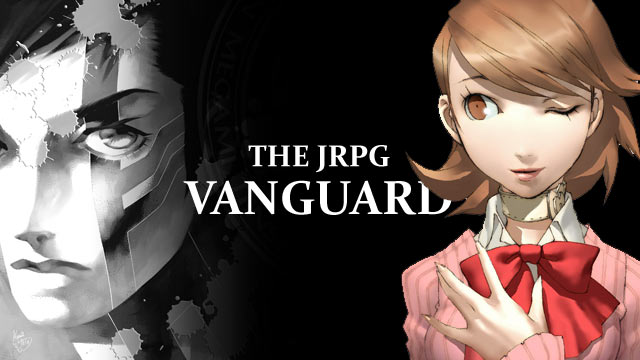
Japanese RPGs have become quite the whipping boy for game critics over the last couple generations. The genre garnered its fair share of praise and won over millions of fans thanks to a slew of high profile titles for SNES and PlayStation, but the bulk of the gaming press seems to think that little change has occurred since then and the genre has stagnated. Read a review of recent JRPG and most of the time there will be a noticeable “here we go again…” written between the lines. The sad truth of the matter is that these guys are mostly right.
Far too many JRPGs fall into the same rut that has held back most developers for the better part of a decade; the stories seem routine, the aesthetics are growing dull, and gameplay mechanics are evolving at a snail’s pace. These problems are compounded by the fact that most modern gamers now want more dynamic stories, find androgynous heroes with ridiculous weapons laughable, and prefer more direct, and action filled gameplay. Look at Final Fantasy XIII: while it succeed by the graces of its franchise, it has easily been the worst-received entry in the series in a long time. Yes, its visuals were incredible, but its story was highly criticized as being surprisingly dull and its overall design is the most linear and restrictive in the franchise’s history. Adding further embarrassment to FF XIII, as well as many JRPGs, is a recent trend of terrible voice acting which, when also combined with frequently absurd and melodramatic dialogue, helps attribute to the increased ridicule.
Thankfully some developers do seem willing enough to take a risk. In order to stand out in today’s RPG market, developers need to experiment with original storytelling and genre-defying mechanics. Presentation can be important, but story and gameplay will always stand firmly as the cornerstone of the genre. Many Japanese developers continue making their games like it were 1997, but some companies have always made a point of taking the road less traveled, while others are making brand new trails.
Square and Enix have always stood atop the mountain of Japanese RPG developers with their incredibly successful Final Fantasy and Dragon Quest franchises, and their merger a few years back pretty much cemented them into that spot permanently. However, while those giants have been lording over the land, a much smaller developer named Atlus has been working one of gaming’s most wildly inventive series.
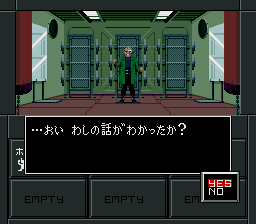 Shin Megami Tensei was released for SNES in Japan in 1992, and while most entries in the genre were firmly rooted in medieval settings and classic archetypes, this game took place in modern Japan and featured one of the first morality systems in a video game. The story revolves around the appearance of demons in the world and the chaos they set in motion as people utilize them to fulfill their own selfish desires. The hero is one of the few people with the power to command and summon demons and is thus among the few who can potentially shape this chaotic new world. Ultimately, the world is decimated and by the end of the game; the hero emerges as the victor and the world he creates is a reflection on the decisions he has made throughout the adventure, including which factions were befriended and defeated. While the use of actual religious figures and deities for the demons helped discourage release outside of Japan, the game was successful enough on its native soil to warrant a sequel, and a franchise was born.
Shin Megami Tensei was released for SNES in Japan in 1992, and while most entries in the genre were firmly rooted in medieval settings and classic archetypes, this game took place in modern Japan and featured one of the first morality systems in a video game. The story revolves around the appearance of demons in the world and the chaos they set in motion as people utilize them to fulfill their own selfish desires. The hero is one of the few people with the power to command and summon demons and is thus among the few who can potentially shape this chaotic new world. Ultimately, the world is decimated and by the end of the game; the hero emerges as the victor and the world he creates is a reflection on the decisions he has made throughout the adventure, including which factions were befriended and defeated. While the use of actual religious figures and deities for the demons helped discourage release outside of Japan, the game was successful enough on its native soil to warrant a sequel, and a franchise was born.
Including sequels, spin-offs, and remakes, the Shin Megami Tensei franchise has produced dozens of games. At this point, the brand name represents more of an umbrella rather than a direct line of connected games; few titles that bear the Shin Megami Tensei name have anything to do with the original, but all of them share a host of qualities that make them stand out from the crowd. The most consistent factor throughout the franchise is the use of demons in combat; every game features demons that can be recruited and used in a fashion similar to Pokémon; alternate demon forms for the characters; or demons that can be summoned for assistance in battle.
Next on the list is choice. While most games in the series don’t have player choice play as dramatic a role as in the original, decisions made by the player are always going to have some affect on the outcome of the game as well as on relationships with characters in the game. The other factor that appears in most of the games are core mechanics that are actually quite old school; most of the titles feature classic, turn-based battles that receive a little extra challenge and strategy by the significant emphasis placed on the benefits of taking advantage of enemies’ weaknesses and the danger of letting them hit yours. Every game features a rock-paper-scissors-like elemental system that is absolutely vital to beating the game; I have personally heard horror stories about how the final boss in Shin Megami Tensei III can easily crush a max level party if the player doesn’t utilize the system correctly.
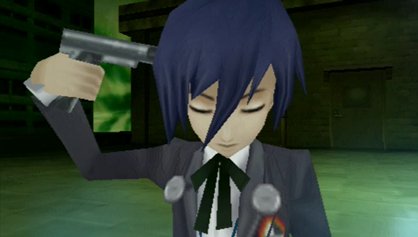
To perform a demon summon in Persona 3, characters had to shoot a gun-shaped “evoker” at their head, which raised less controversy than you’d expect.
Of course all of this information would be pretty much moot if the series hadn’t made the jump to North American shores with the release of Persona on PlayStation, albeit somewhat censored for potentially offensive content. New releases continued to find their way to America, but they remained niche interests until Shin Megami Tensei III garnered major critical praise for its unique art style, dynamic story, and significant challenge. The two Digital Devil Saga games also achieved cult status, but the series finally took off with the release of Persona 3, which featured an interesting balance of high school life simulator, hardcore dungeon crawler, a rock/rap/pop soundtrack, and solid production values throughout, including (gasp!) good voice acting. The only problem with all of these titles is the fact that they have all only appeared on PlayStation consoles. Thankfully the continued success of the series and Nintendo DS all but guaranteed the two would cross paths.
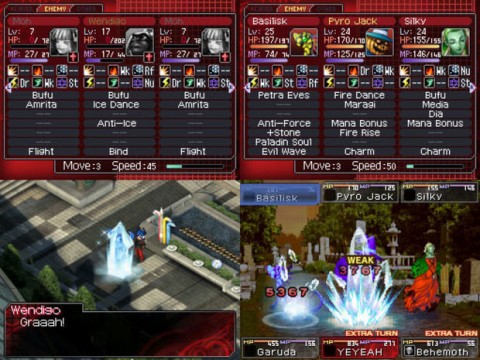
In 2009, Nintendo loyalists were finally allowed to experience the unique series with the release of Devil Survivor. The story is similar to that of the original in that demons have appeared in Tokyo, but the characters and events are different, as is the core gameplay. Devil Survivor contains an interesting mixture of turn-based strategy and traditional RPG battles interconnected by menu-based exploration. The unique gameplay and great story make it well worth checking out. In 2010 Atlus released Shin Megami Tensei: Strange Journey, also for DS, which revolves around a UN group examining a strange, demon-infested anomaly at the South Pole which is expanding and consuming everything in its path. Once again, the story is shaped by player choices, however the gameplay returns to the turn-based battles and first person dungeon crawling of old. The future of the franchise on Nintendo systems continues to look bright because Atlus has already confirmed support for 3DS, including entries in the main series, the Persona series, and another title to do with Devil Survivor.
Regardless of all of Atlus’ recent success, the fact remains that it is a relatively small fish compared to the RPG behemoth that is Square Enix. Thankfully, even the giants have shown signs that they have some fresh ideas up their sleeves. In 2008, Square Enix released The World Ends With You for DS, and it was as far away as a gamer could get from the usual cash cows like Final Fantasy or Kingdom Hearts. Like Atlus so frequently does, Square Enix set its game in hectic, trendy, modern Tokyo, a location that helped bring to life a slick anime aesthetic intermixed with urban styles reminiscent of graffiti and tattoos. The story was also another surprising departure from the norm, putting the main character, Neku, in a strange game show-like struggle for survival governed by the sadistic whims of the villains, each of whom is very well written, with unique quirks that make them stand out from just about every other bad guy placed in a comparable RPG.
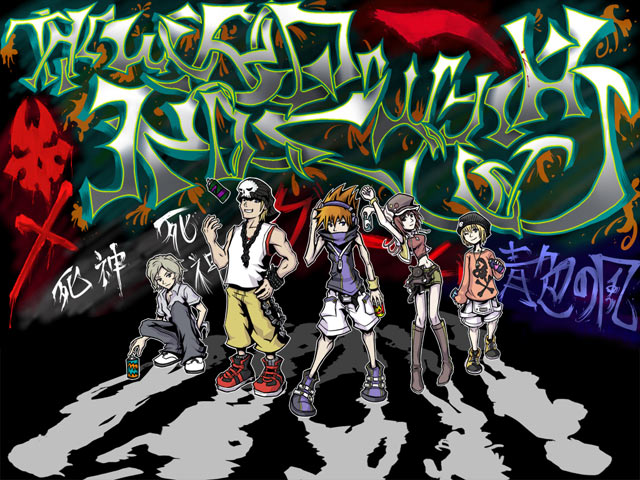
But where The World Ends with You really stands out is in the mechanics. Stats are determined by popularity of the clothes Neku is wearing, and the battle system involves controlling two characters at the same time while using both screens– touch and button inputs simultaneously! The result is hectic, challenging and amazingly entertaining. Altogether, The World Ends with You feels like it came from a company more daring than Square Enix and definitely stands out as the system’s premier RPG.
Recently, Square Enix once again showed it occasionally steps up and delivers something new and unexpected, only this time it did so with one of its largest, most beloved franchises. Dragon Quest IX looks and plays much like its predecessors: the setting is medieval, there are a variety of classes to choose from, and battles are your typical turn-based affair. Where Square Enix innovated was in the realm of multiplayer, a feature that most people probably never would have expected to see in the franchise.
Multiplayer questing has been a common part in action RPGs like Monster Hunter and Phantasy Star Online, but it has never been done as well as in Dragon Quest IX, let alone in a turn-based game or on a handheld system. Multiplayer questing like this is a natural fit for portable systems and the impact it could have on future games is impressive to think about; so many RPGs have primarily been solitary experiences and the promise of it becoming more social is exciting to think about, MMOs notwithstanding. In fact, the influences might already be taking effect; Nintendo previously revealed that Pokémon Black/White will drastically expand on the franchise’s multiplayer components, including co-op quests in addition to the tried and true battling and trading.
The titles listed above prove beyond a shadow of a doubt that JRPGs can retain a place in the changing gaming landscape, but I wish I could have made this article longer. Shin Megami Tensei, The World Ends with You, and Dragon Quest IX have all done the right thing and pushed the genre forward, but the fact remains that most developers are standing still. If more games don’t start innovating, JRPGs will subside to little more than a niche genre, and the big dogs, like Final Fantasy, can only keep them floating in the mainstream for so long.
My own story is evidence to JRPGs have declined. I loved the SNES RPG greats and enjoyed more than a few on PlayStation, but now all the Tales games in the world and Arc Rise Fantasia just don’t do it for me. If I want to explore a fantasy world, I will play Elder Scrolls: Oblivion, and if I want great stories, I can just boot up Mass Effect. As it stands right now, Japan simply isn’t creating the type of product needed to capture the imagination of the majority of the gaming market. If Japan’s RPG developers want to remain a presence throughout the world, they need to start thinking bigger, creating beautiful worlds we want to explore and crafting stories that we can put ourselves into. Japan’s developers of course have a style and approach to storytelling and game design that is entirely their own, but if they can’t find a way to put it into a more modern package, then they will be the only gamers to experience it.




 ShareThis
ShareThis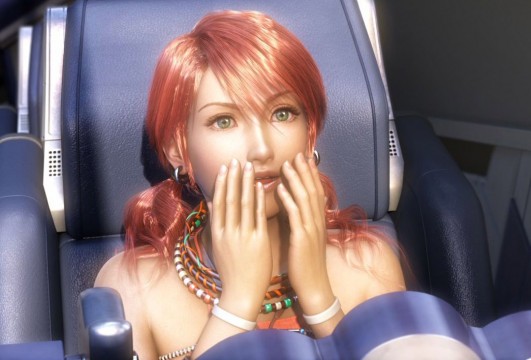








The World Ends With You is officially on my to-get list. And the other games you talked about sound so interesting too, I guess when you look on JRPGs as a whole from a novice perspective the Final Fantasy menu based clones just cloud your judgement. Great read, though :)
I agree! Such an epic story. It makes me wish I’d played something in the SMT series but I have RPG commitment issues anymore. :P